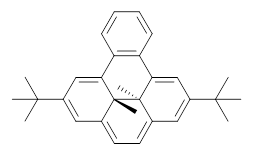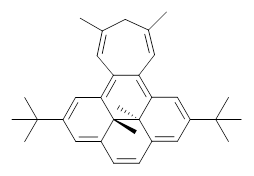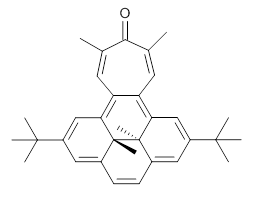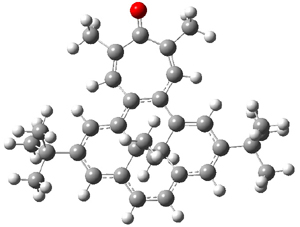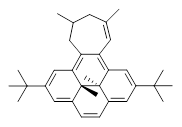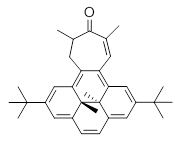K Z. Sumon, A. Henni, and Allan L. L. East. Industrial & Engineering Chemistry Research 2012 51 (37), 11924-11930
Contributed by Thomas Cundari
I tell my students, as was told tome, that the title is the shortest abstract for a paper. The title should becarefully chosen to be as succinct as possible, and also to catch the reader'sattention and make them want to read the rest of the paper. I mention this inconnection with a recent paper[1]by Sumon, Henni and East of the University of Regina, entitled"Predicting pKa of A
minesfor CO2 Capture: Computer versus Pencil-and-Paper." This title has three factors
to recommend it - an important andpopular application (carbon dioxide
capture), one of the most fundamental concepts in chemistry (pKa andhence Brø
nsted acidity), and the title itselfinvokes images of a titanic struggle between a giant pencil and a multi-headedLinux cluster beast, perhaps akin to the Leviathans
from recent
Avengers movie.
Thus, suitably intrigued, I read on.The authors reported a new pKa calculational method, entitled SHE - one assumes thatthe abbreviation denotes theauthor's last names. The rationale for the various energetic contributionsneeded for ab initio computed pKavalues like the free energy of the proton in aqueous solution were given. Themethod was then applied to organic amines of interest in carbon capture, morespecifically the amines used to strip carbon dioxide from power plant effluent.
The underlying electronic energiesneeded to compute thedifference in free energy between an amine base (B) and its Brønsted conjugate acid (BH+)were computed at the MP2/6-31G(d) level of theory. The basis set settled uponby the authors was compared to larger basis sets - triple zeta, withpolarization functions on H, inclusion of diffusion functions, etc. - and the smaller basis setreproduced a larger, extended basis set reasonably well for a subset ofprimary, secondary, tertiary and cyclic amines. Moreover, I assumed that anydifferences introduced by the use of a less complete basis set could be accounted for with theempirical constant C (more about that below). Obviously, smaller basis setswill permit access to larger amines, as the authors pointed out.
For the ab initio calculations, the authors also investigated the role ofthe atomic radii (used in the continuum solvation calculations) as well as the impactof conformational flexibility. The latter issue is also one of the majordifficulties in developing and applying paper-and-pencil methods, in that thefunctional groups of a molecule are the same whether or not it is in a low orhigh energy conformation, and thus so-called 2D methods cannot distinguish onefrom the other, and both would thus be predicted to have identical properties.
Interestingly, only electronic energies (thusobviating the need for a potentially expensive Hessian calculation) wereutilized as current and previous analyses by the author indicated that the zeropoint, enthalpic and entropic corrections to convert electronic energiesto free energies were nearconstant given the chemical similarity of the conjugate acid-base pairs (B andBH+ or B-OH2 and BH+-OH2) that makeup the amine systems of interest. For the latter conjugate pair, an extra watermolecule was added to the continuum solvent cavity to mimic what some mightrefer to as microsolvation (Model II in the author's jargon).
An empirical constant of 1.7 pKaunits for cyclic amines and 0.7 pKa units for acyclic amines was subtracted toput computed values into better correspondence with experimentalvalues for a test set of 32 molecules, and presumably to account for some ofthe uncertainty and approximations made elsewhere in the SHE procedure.
Hence, the authors presented acompact, computationally efficient procedure for computing the pKa's of amines.Arrayed against this approach is a more old school, parametric
method. For those of us old enoughto remember the days before computers were all powerful, the use of parametricmethods for estimating important quantities was a popular researchendeavor for understanding and
estimating important physicalquantities of novel materials. Benson's rules for predicting heats offormation,[2]and Drago's EC model for acid-base reaction enthalpies,[3]are but two examples of parametric methods. Today, the parametric
approach is embodied in QSPR and QSARanalyses, many of which have at their heart an assumption of group additivity,which assumes that the whole (molecule) is the sum of its parts (functionalgroups).
The pencil-and-paper method utilizedby the authors was the PDS (Perrin-Dempsey-Sarjeant) technique. Not requiringany MP2 computations,the method is, ofcourse, much faster than "computer" methods. Like all methods, it islimited by the functional group approximation. Therefore, if one would like touse PDS to estimate thepKa of a new material, which contains a functional group not in the originalparameterization, then one is faced with the daunting task of extending theparameterization to the new functional group. Of course, any attempts to go “outsidethe box,” will always going to suffer from the uncertainty that arises fromextrapolation versus interpolation, which has always been a problem forparametric methods.
The authors presented an updated PDSmethod by introducing new base values and functional group corrections, whichessentially halved the RMS error for amines of interest in carbon dioxidecapture.
Finally, with this framework, theepic battle between computer and paper/pencil was on! And, it was a true battleroyale, with parametric and computational methods squaring off among themselvesand with each other. The old and new PDS methods were compared for a test setof 32 amines, and the latter, as alluded to above, outperformed the former by afactor of two. The new PDS method yielded a pKa error of only 0.18 pKa units.The SHE method had an RMS error of 0.28, hence only marginally higher. Theinclusion of the C empirical constant reduced the error in the SHE method bynearly 1 pKa unit. At the end of the struggle, the SHE method stood alone inthe ring. It had an RMS error less than the other approaches investigated bythe authors in this paper, and given the attention the authors put into makingit as computationally efficient as possible, one would expect this recipe tohave significant upside for larger organic amines. However, the updated PDSmethod fought valiantly, and would seem to be an interesting candidate for furtherresearch to diversify it to alarger functional grouplibrary.
Likewise, it would also be ofinterest to diversify the SHE method in a similar manner to investigate a greater range of possible CO2sorbents. Other possible extensions include assessing the impact of lessexpensive abs initio methods likeHartree-Fock (yes, good old Hartree-Fock!) or perhaps DFT, instead of MP2, tobring the SHE method to larger and more complex organics amines and indeed evennon-amines.
[1] Predicting pKa of Amines for CO2 Capture: Computer versusPencil-and-Paper. K Z. Sumon, A. Henni, and Allan L. L. East.
Industrial& Engineering Chemistry Research 2012 51 (37),11924-11930
[2] Estimation of heats of formation of organic compounds by additivitymethods. N. Cohen and S. W.Benson.
Chemical Reviews 1993 93 (7), 2419-2438
[3] A Double-Scale Equation for Correlating Enthalpies of Lewis Acid-BaseInteractions. R. S. Dragoand B. B. Wayland.
Journal of the American Chemical Society 1965 87(16), 3571-3577





